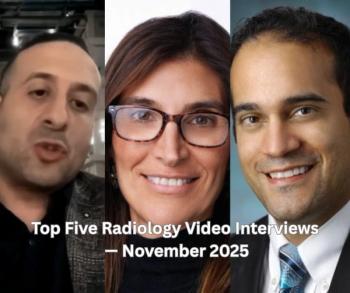
The Seasons of a Radiologist's Life
I was once a young radiologist, eager to learn all there was to learn about my craft. Today, I'm in a different season of my life.
I remember how I felt when I got my first real job. After serving six years in the Navy, I accepted employment in West Virginia. I considered myself well trained in all the latest modalities. I certainly believed that I was much more up to date than the rest of the physicians with whom I was working. Looking back, that was the spring of my radiology career.
CT was fairly new, certainly in the West Virginia private practice that I joined. As the new kid I was seen as the resource for my older partners when it came to CT and interventional procedures. Some of the partners were more interested than others in learning the new modalities. I couldn't understand why they weren't all as enthusiastic as I. It wasn't until MRI became available a few years later that I learned how hard it was to pick up a new modality while engaged in a full-time radiology practice.
Still, I was young and up to the challenge. I was eager to learn all there was to learn about my craft. I spent thousands of dollars going to CME conferences and tried hard to keep up with the literature, although I usually learned best one interesting case at a time.
I couldn't understand it. Why weren't the older members of the group more passionate about learning all there was to learn?
In particular, there was one member of the group that I shall call Jerry. Jerry was older, and he was far more interested in his garden, his orchids, and planning elaborate dinners on the vacation he was taking the following year than in learning something new in radiology. I frequently thought that if Jerry put half the energy into radiology that he put into his other activities he would be one of the best radiologists in the state. He seemed to do the minimum needed to get through each day. While I was frequently stressed, he always seemed calm and relaxed and planning his next vacation.
The years have passed and I have come to realize that I have turned into Jerry.
I have pursued a second career outside of radiology. I earned my CFP® and am working part time with my wife in our wealth management business. I am more interested in earning CE for my CFP® than CME for my medical license. I was happy when I was no longer asked to read MRIs, as a subspecialist would read them. I was happy when I was able to give up IR and performing myelograms to decrease my malpractice insurance.
I also find myself getting angry. I, especially, get angry on call. Physicians ordering unnecessary studies that will likely not get reimbursed, family practice residents who won't try a lumbar puncture, patients who refuse to wear a seat belt and end up in an auto accident causing me to read over a thousand CT images - all of these things make me angry.
I get angry with the patient who makes two separate trips to the ER on the same day, one for each hip, knowing that I am paying for it. They certainly aren't.
Mostly, I get angry with myself for feeling the way I do. I am angry at myself for losing that naïve sense of duty, honor, and privilege that was once the way I felt about medicine.
I'm sorry, Jerry, for thinking of you the way I did. I realize now that you were in a different season of your life. I, too, am now in a different season of life. Winter is approaching.
Newsletter
Stay at the forefront of radiology with the Diagnostic Imaging newsletter, delivering the latest news, clinical insights, and imaging advancements for today’s radiologists.



























